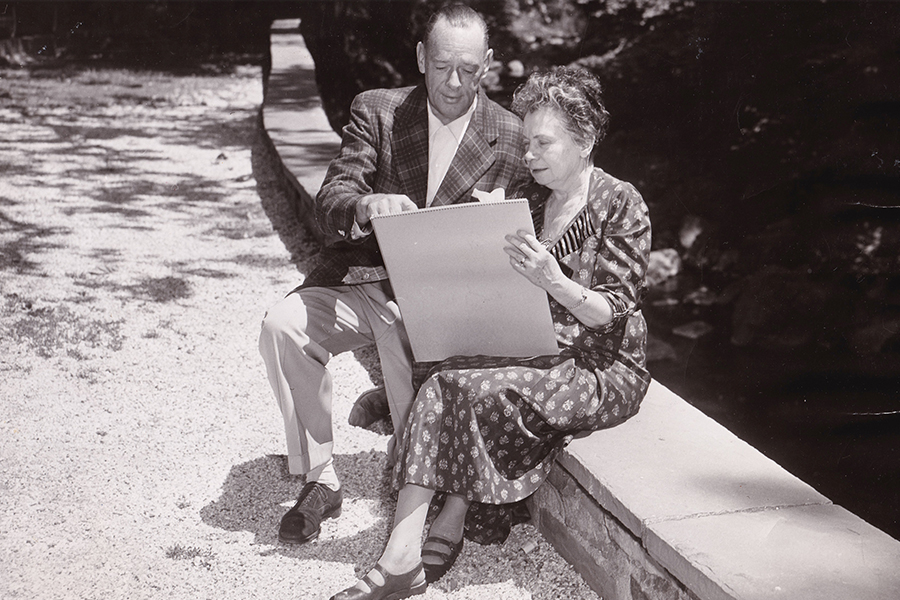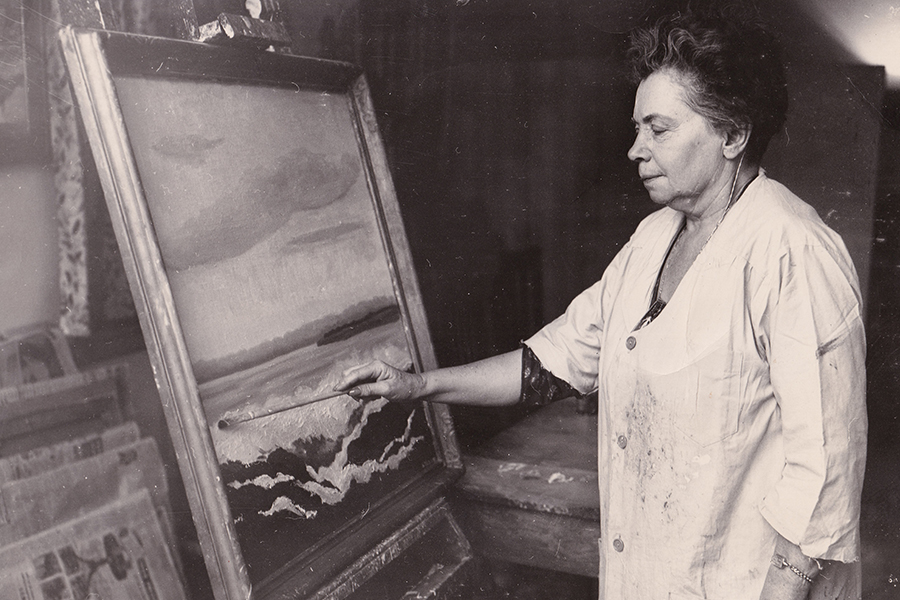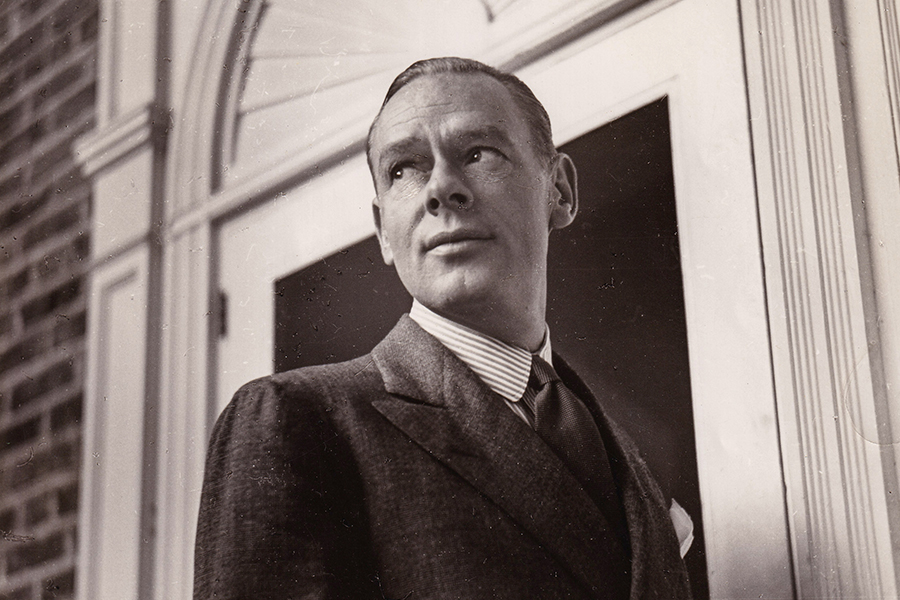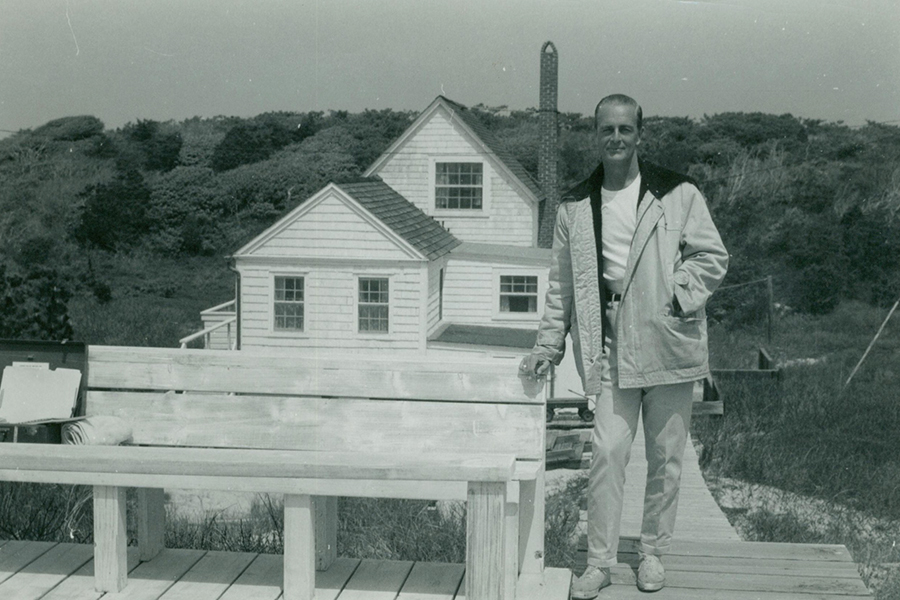
A poet and artist, Antoinette Scudder, in partnership with Frank Carrington, became co-founder of Paper Mill Playhouse. As the daughter of Wallace M. Scudder, founder of the Newark Evening News, and Ida Quinby Scudder (whose father, James M. Quinby, was three times mayor of Newark and a member of Congress), she had early in her life became a wealthy patron of the arts and it was she who bought the old paper mill, paid for its remodeling into Paper Mill Playhouse, and continued to subsidize it for many years. She seemed happy to do so and once told a reporter, “I’ve been completely stagestruck since childhood.”

Antoinette Scudder studied at Columbia University, the Art Students’ League of New York, the Cape Cod School of Art, and with many of the outstanding artists of the day. She was well known for her landscapes, many of the New England coast and countryside, and for her flower studies. Her oils and watercolors were exhibited widely, winning many prizes. She was also a writer of merit, with thirty plays and several volumes of verse to her credit. One of her plays, The Second Generation, won first prize in 1930 from the Women’s Arts Club and was produced by various groups in Newark, New Jersey. In 1932, she won second prize in the annual play contest of the National League of American Pen Women with her one-act play Rescue, which later was presented at Paper Mill Playhouse. Her dramatization of Hans Christian Andersen’s The Snow Queen was broadcast over WOR radio in the winter of 1938–1939.
Antoinette died in her sleep at her Newark home on January 26, 1958, at the age of 72. She had brought the dream of a theatre from the meager beginnings of amateur enthusiasts to one of the most renowned playhouses ever to exist.
Frank Carrington, son of an army man, was born on Angel Island, California, a former army base. At the age of six, he wrote a five-act play, and by twelve he was doing various small jobs at Pasadena Playhouse. His first stage role was at age thirteen. When his family moved to New Jersey, he became active in local theatre. He lived on Park Road in Short Hills, from where he could hear the old whistle at the Diamond Paper Mill and he often passed the mill, thinking it would make a good theater. At that time, he was working in a law office and studying theatre at night. Although discouraged by his father, Carrington pursued a career in acting and directing. He was one of the founders of the Cherry Lane Theatre in New York City, The Arts Project of Cherry Grove on Fire Island, and was very active in the New York theatre scene, becoming a friend of many of the theatre greats of the times.

Those friendships allowed him later to call on many famous personalities to appear at Paper Mill Playhouse. In 1928, he was asked to join Eva Le Gallienne in her 14th Street Civic Repertory Theatre but chose instead to appear in Antoinette Scudder’s play Prince Pentaur, a decision that led to their long relationship as founders of Paper Mill Playhouse. Although described as a “patrician” and called “Mr. Carrington” by everyone connected to Paper Mill, he was always interested in and thoughtful to his staff and the performers who appeared there. In turn, he received devotion and complete loyalty from all of them. Frank Carrington died in 1975 after a long struggle with cancer. His exact age is uncertain as he refused to give his birthdate, joking that the records had been “conveniently lost” in the San Francisco earthquake of 1906.
The Carrington House
In 1927, Frank Carrington purchased a summer home on Fire Island from his friend and fellow Millburn resident, Frederick Marquet. When away from his work at Paper Mill Playhouse, he would often retreat there to sail and ride his boats. From 1948 to the 1960s, Carrington was known for renting his guest cottage to his artistic friends and acquaintances, with his first tenant being Lincoln Kirstein, co-founder of the New York City Ballet. The extensive list of tenants and guests that followed includes Jerome Robbins, Tennesse Williams, Christopher Isherwood, Eugene O’Neil, and Truman Capote, who would write his novella, Breakfast at Tiffany’s, during his stay there in 1957.

Along with being one of the oldest existing houses on the island, The Carrington House holds historical significance as a safe space and refuge for LGBTQ+ artists during the mid-20th century. In 1969, Carrington deeded the property to the National Park Service for its preservation. In 2016, the same year Paper Mill Playhouse won the Regional Theatre Tony Award, The Carrington House was placed on the National Registry of Historic Places and is the only historic LGBTQ-owned building by the NPS.
For more information on this historical site, please check out the article at: https://www.pineshistory.org/the-archives/the-history-of-fire-islands-carrington-house















